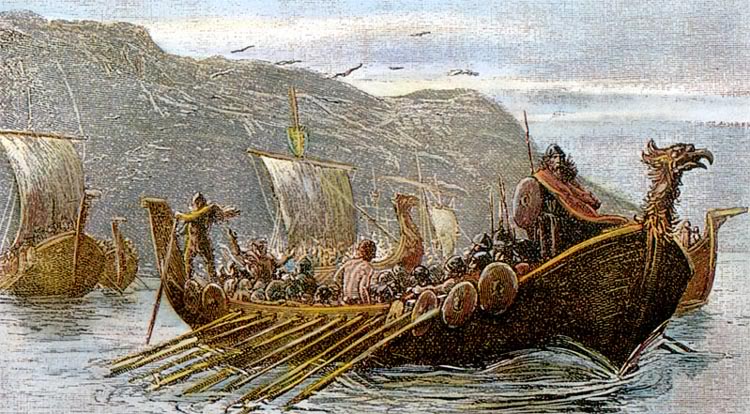 When you hear the name “Viking” you tend to think of the fierce warriors who conquered most of Europe and even places as remote as North America, invading lands by sea, upon their distinctive long ships. Included in that image are all the families they left behind.
When you hear the name “Viking” you tend to think of the fierce warriors who conquered most of Europe and even places as remote as North America, invading lands by sea, upon their distinctive long ships. Included in that image are all the families they left behind.
Just like the horns on their helmets, “Vikings” are not.
Not really.
That’s because when we in Western society give someone a name, like “American”, or “Edmontonian” or “Viking”, we automatically think of a group of people based inside a political border – country, shire, town, city, village, province, etc.
Vikings didn’t have a country.
The Norse people of the eight and ninth century lived in Scandanavia. Norway, Finland, Sweden and Iceland didn’t exist as identifiable countries. There were hundreds of tiny kingdoms, and the local inhabitants gave their political allegiance to the local king – usually in order to enjoy the protection he could provide in times of trouble.
Eventually, using their very sea-worthy longships and rudimentary navigation methods, groups of these people set off in search of richer lands. They found Britain, and a great many other places, that they forcibly invaded, stealing the riches and bounty they found there.
In old Norse, Viking comes from vik, (creek, inlet, small bay). Viking was a verb – it was the act of setting off by sea to participate in raiding activities or piracy. Just sailing off to settle peaceably somewhere didn’t count.
A person who went on a viking eventually became known as a viking…but vikings could come from a whole range of kingdoms and future countries within Scandinavia.
So while the warrior in the longship eventually acquired the name as a pronoun, the people he left at home were not Vikings.
_________